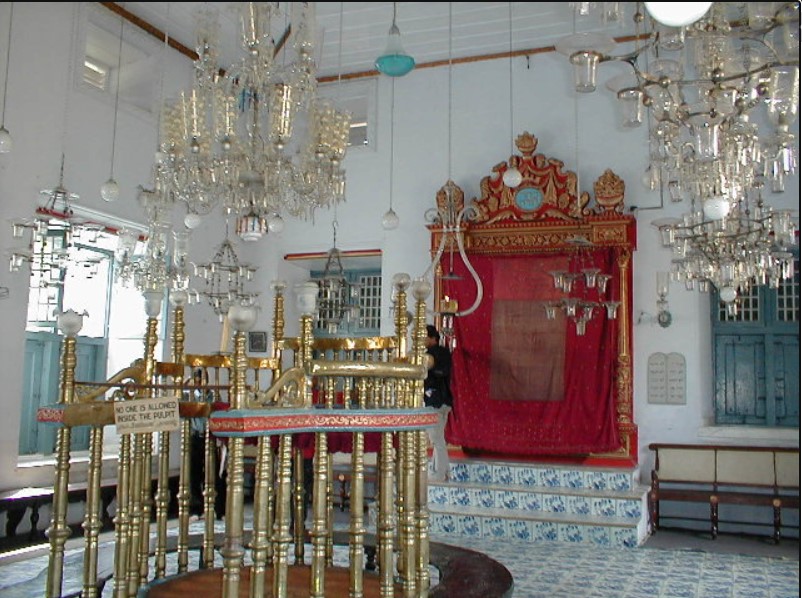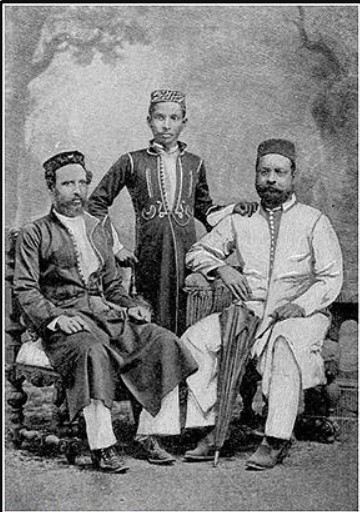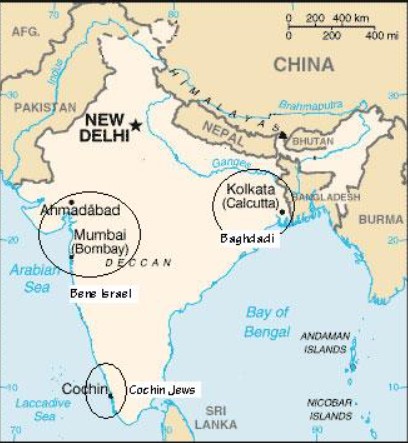
Most of us would be well acquainted with the existence of people of diverse religious identities and the sheer diversity that is encompassed within the Indian realm. However, only a small minority is aware of the existence of people practising Jewish faith in our country. Judaism is a monotheistic ethnic religion that is based on the belief of God revealing himself to various Hebrew prophets following a covenant signed with the Children of Israel. Jews account for 0.2% of the world population comprising 14.5 million adherents. India has a sizeable population of the community which has produced prolific individuals who have made contributions in far excess to their proportion – from the decorated Bangladesh War veteran Jack Farj Rafael Jacob to the popular Bollywood actress Florence Ezekiel Nadira are among other examples. The Jews have a long association with India with primarily four Jewish groups residing in the country.

The first among these arrived in the city of Cochin (Kochi) in Kerala post the Siege of Jerusalem in 70 CE.The ruler of the Chera dynasty, Cheraman Perumal warmly received Cochin Jews. The work of a Dutch traveller John Huygen van Linschoten sheds interesting light on the lifestyle of the Malabar Jews. He writes, “vast number of Jews there are very rich, and all the other different nations live in perfect liberty as to religion, each having its own temple.” During the period of Dutch rule, the Jews improved their socio-economic status and engaged in trade of various commodities. They speak the Judeo-Malayalam language and are further divided into three endogamous groups – White, Black and Meshuhrarim. These groups share common customs and traits but neither marry nor interact with each other. The synagogues built for the community’s use are unique in construction and architecture with a blend of Keralite and Jewish traditions. All but one of the structures still serves as a functional synagogue and the rest have fallen into disuse following large scale Aliyah or migration to Israel. The cuisine of the Keralite Jewish community is largely the same as other Malayalis with the adherence to Jewish dietary laws. Few examples are a distinctive Cochin Jewish coconut rice, Pastel or a crisp pastry, ellegal or chicken and Motta Salada or a sweet served at weddings and bar mitzvahs (the Jewish coming of age rituals.
The second entrants to India were the Bene Israel who arrived around the period of 1768 AD. They reached the Konkan coast and lived in Bombay, remaining isolated from the larger Jewish community but following some Jewish practices. The history of Bene Israel is available through the writings of the historian Hayeem S. Kehimkar. He writes that they arrived in India during the seventh century AD from Babylonia or Palestine to escape the persecution of King Antiochus. Like their counterparts down south, the Bene Israelis are also divided into two groups, kala and gora. They gradually adopted Marathi as their mother tongue and Hebrew passed into oblivion along with abiding by local Hindu and Muslim customs. It was only during the end of the eighteenth century that the community gained widespread recognition as Jews while enlisting in the British East India Company and they were granted the right to migrate to Israel as recently as 1964. They earned the nickname shanivar teli or Saturday oil-pressers because they abstained from working on Saturdays, the day of Shabbat or the Jewish day of rest and remembrance. Unlike the Cochin Jews, the Bene Israelis worked in professions such as clerks, mechanics and tailors that can be categorized as lower-middle-class. The majority of Bene Israeli cuisine has a similarity to Goan and Maharashtrian food such as chitanee or chicken, cholent or beef stew and saat padder puris or seven-layered puris among other examples.

The third and latest Jewish community to be discovered in India are the Baghdadi Jews. They arrived from Iraq and other Arab countries and spoke Arabic as their mother tongue. According to the historian Joan G. Roland, they first established themselves in Calcutta (Kolkata) and then in Bombay (Mumbai). The Iraqi Jews, as they are also known, comprised of elite families who acted as merchants or middlemen during trade of various goods and services. They arrived in the country through the Indian Ocean and South China Sea trade routes. The Baghdadis were of a comparable social status as the Cochin Jews and maintained an elaborate network of synagogues and schools. During initial stages, they often shared common spaces such as synagogues and cemeteries with the Bene Israelis. However, they began to dissociate themselves with their coreligionists from the onset of the nineteenth century owing to the privileges conferred on them by being the only non-British white community in India. After Independence, members of the community migrated in large numbers to Israel and today the number stands at around 100 in the cities of Calcutta and Bombay. Like the Cochin Jews and Bene Israelis, the Baghdadis also infused their food preferences with locally available ingredients. According to the food critic Copeland Marks, dishes were influenced by their ancestry in Baghdad with hameen or combination of vegetables and meat and koobe or stuffed dumplings being cooked on special occasions. Post their migration to Israel families of Baghdadi descent, they continue to play an influential role in the country’s society and politics along with their small settlements abroad.

Apart from the three major Jewish communities, there also exists another group of Jews named the Bnei Menashe or Manipur Jews. They inhabit the north-eastern states of Manipur and Mizoram and claimed ancestry to the Ten Lost Tribes of Israel through descent from Menasseh or the biblical name for Man. The earliest demand from the community to be classified as Jews came in 1951 from one of the tribal leaders based on a purported dream of Israel as his homeland. Their claim was finally accepted by the Chief Rabbi Shlomo Amar in 2005 in the aftermath of widespread debate and controversy regarding their Jewishness in both India and Israel. Similar to the Bnei Menashe there is another small Telugu speaking community named Bene Ephraim that awaits Jewish recognition from the Chief Rabbi.
The Jews of India have lived and mingled freely with the local Indian population without a trace of anti-Semitism at a time when such feelings were paramount in the rest of the world. The Jewish holy book Talmud says that the highest form of wisdom is kindness and the Maharaja of Nawanagar providing shelter to a thousand Jewish orphans from Poland during World War 2 exemplifies this trait. Thus, the existence of a vibrant and prosperous Jewish community is yet another feather in India’s cap of promoting tolerance, peace and harmony through a testament to its policy of Vasudhaiva Kutumbakam. After all, the Talmud says, “One man’s candle is light for many” and the Indian legacy of Jewish ancestry has shown how one country’s candle is the beacon of hope and humanity.
Sambhrant
Sambhrant is currently pursuing an Integrated Master’s degree in social sciences from University of Hyderabad. His interests include writing, reading, singing, watching movies and dreaming about food.

